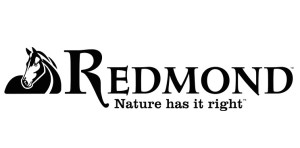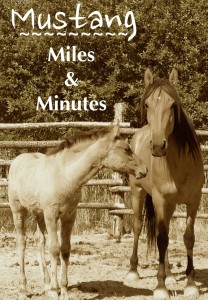 Editor’s Note: Most mustang trainers will tell you there’s something very special about the time they spend with these once-wild horses. They may be exponentially more difficult to work with, but once the horse develops a trusting relationship with the human, the result can be proportionally more rewarding.
Editor’s Note: Most mustang trainers will tell you there’s something very special about the time they spend with these once-wild horses. They may be exponentially more difficult to work with, but once the horse develops a trusting relationship with the human, the result can be proportionally more rewarding.
In this installment, Raechel Nelson reflects on the efforts, distinctions, and rewards of her work with Alita.
What is Mustang Miles & Minutes?
Miles & Minutes is generously sponsored by Redmond Equine.
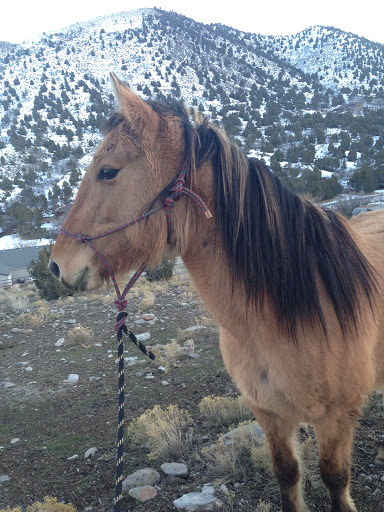 BestHorsePractices: In our conversations, it seems like your progress is much more than one accomplishment or another. It’s about building a relationship and a foundation of trust, understanding and reliability. It’s been a great opportunity for growth for you, hasn’t it?
BestHorsePractices: In our conversations, it seems like your progress is much more than one accomplishment or another. It’s about building a relationship and a foundation of trust, understanding and reliability. It’s been a great opportunity for growth for you, hasn’t it?
Raechel Nelson: She’s amazing. There has been a lot of discovery together – discovering what I’m able to teach her. But there is a therapeutic nature to our work. It’s interactive, engaged, and reflective. It’s all about what am I communicating and how am I communicating it. Any of her successes I feel like are my successes because I’ve created it, nurtured it.
BHP: You’re clearly seeing something with her that you haven’t seen in your work with domestic horses. What is it?
RN: It’s something that I’ve had to work so hard for, that she’s made me work so hard for. No disrespect to them, but the other horses are dead heads in comparison.
I’ve had hard time grabbing onto this point and owning it, but she really does have to trust me. She does trust me. She doesn’t want to cuddle with me, but she trusts me.
Watching her pick through thick branches to follow me along a rough trail and to be obedient. She knows she’s not going to get in trouble.
I watched her as I was working on saddling her. She didn’t want the saddle on, but she did trust that I was not going to do something bad to her. She didn’t like it, but 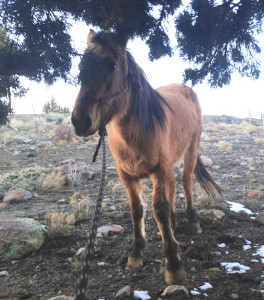 there’s definitely trust there.
there’s definitely trust there.
Sometimes I sell that short because, I’m thinking: Well, she didn’t want me to touch her today. Therefore, she doesn’t trust me. But that’s not necessarily true. She wants to be connected. She’s so sensitive compared to the other horses.
The other day, I took her halter off and she followed. I clucked and she moved forward, I smooched (making kisses sounds, Nelson’s cue for backing) and she backed. All without a halter. Moving hindquarters. Moving her front. She’s watching me. She’s paying attention.
BHP: How do you discriminate between trust and engagement versus resignation and defeatism?
RN: I think she’s past that. Earlier on there was a fear component. She’d be frozen. But when we’re doing these things, she’s relaxed. She’s got her leg cocked. She’s licking and chewing. She’s got her head lowered and her expression is totally different than when she’s fearful.
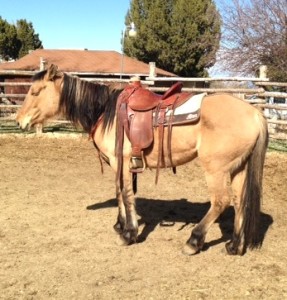 She still always communicates to me when she is uncomfortable. She lets me know when she’s out of her comfort zone. It can be as simple as watching her feet. She’s learned from our work with West Taylor, that backing is a good option. If she is uncomfortable, she can back. She’s moved away from the striking, self-defensive, self-preservation behaviors. She communicates her need for space by backing. Once she works through it, she makes the choice to stay.
She still always communicates to me when she is uncomfortable. She lets me know when she’s out of her comfort zone. It can be as simple as watching her feet. She’s learned from our work with West Taylor, that backing is a good option. If she is uncomfortable, she can back. She’s moved away from the striking, self-defensive, self-preservation behaviors. She communicates her need for space by backing. Once she works through it, she makes the choice to stay.
Everything we do is on the loose lead line. I never force her. It’s always her decision to be there.
BHP: Does it make you think back to starting previous horses and that you could have been lighter because you didn’t know what you know now?
RN: Absolutely. When I was younger, my work involved a ton of repetition – kind of the Clinton Anderson method of doing things over and over. Also, I didn’t know what to look for as I do now.
I consider my work with her a gift. She’s so sensitive. So light. I have the ability to abuse that and to ruin it. She’s given it to me. It’s my responsibility:
- To never take that sensitivity and lightness away from her.
- To not dull her.
- To always listen to her.
- To stop and look at what I’m doing.
Sometimes, I need to step back and examine the progress, to make sure I’m not being too goal-oriented.
For example:
- Once I stopped trying to get the halter on her, then it wasn’t a big deal to get the halter on her.
- With saddling, it should not be ‘trying to get the saddle on.’ It should be about what am I trying to teach her in this step right now.
Doing things as attentively as possible and not just getting the job done, but rather working with her reactions. It’s awesome.
Read more Mustang Miles & Minutes.
